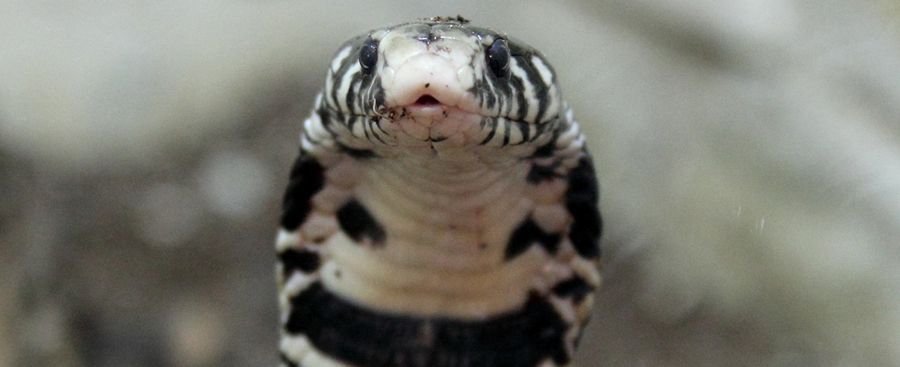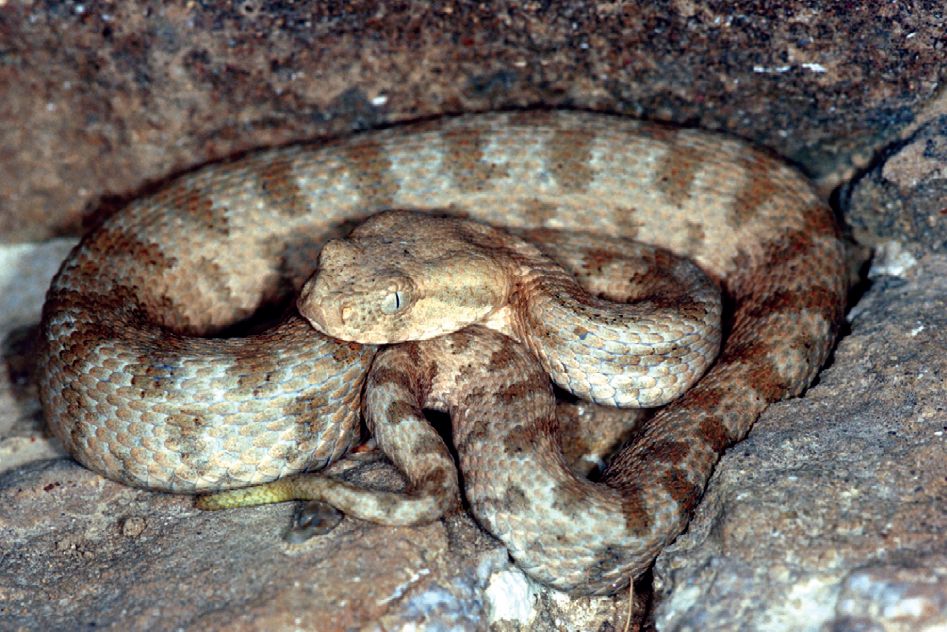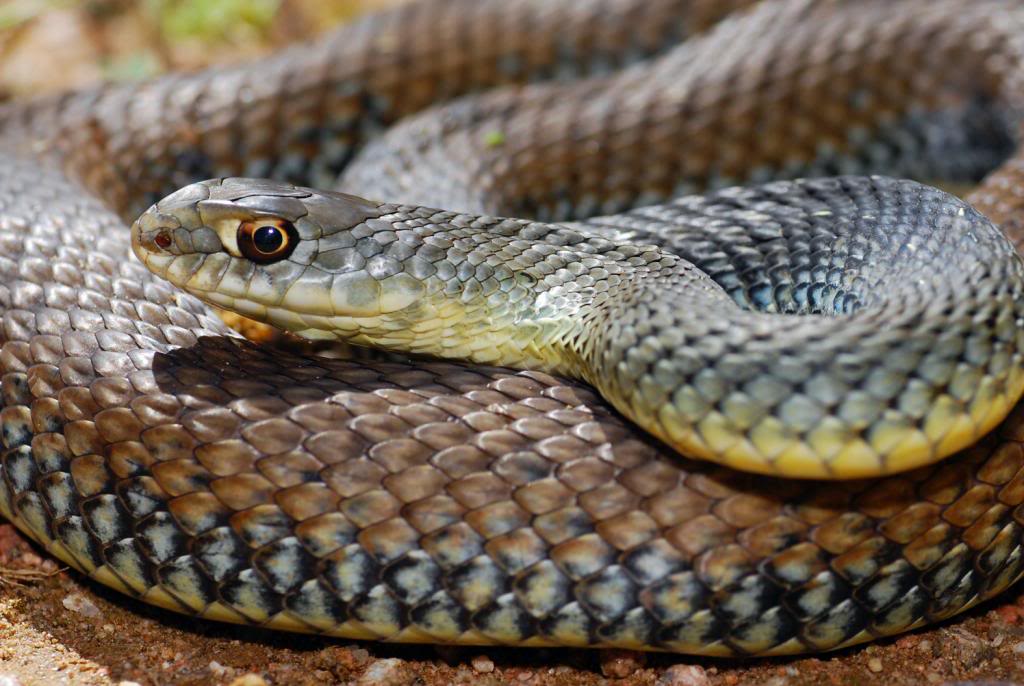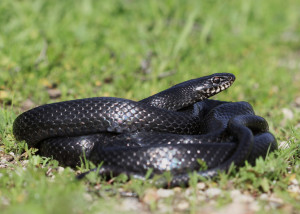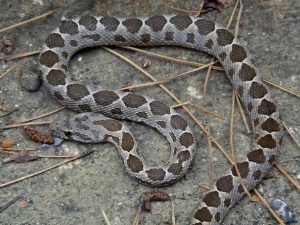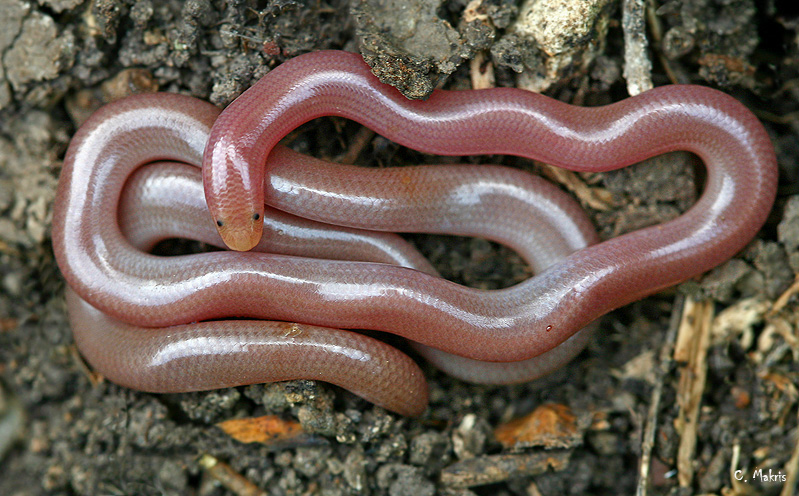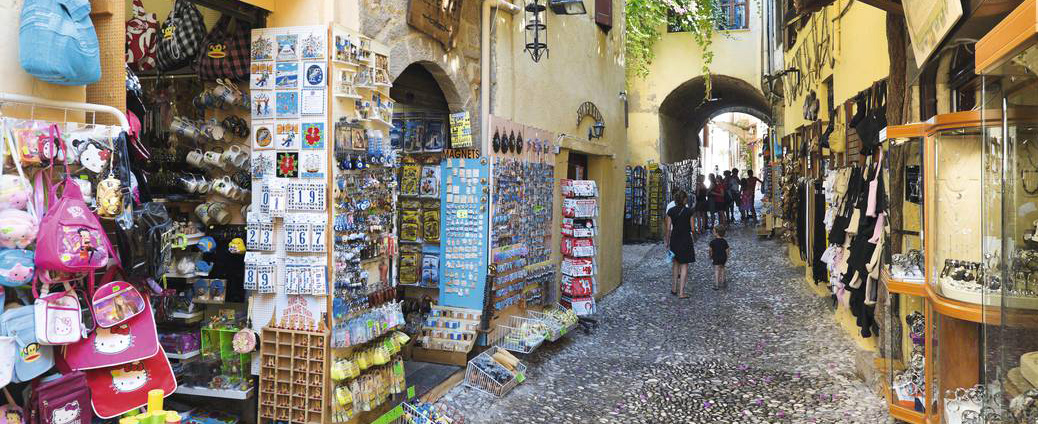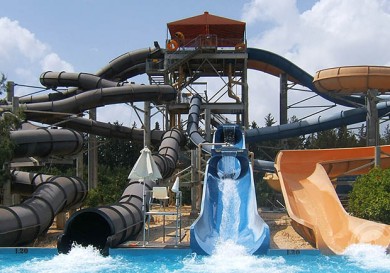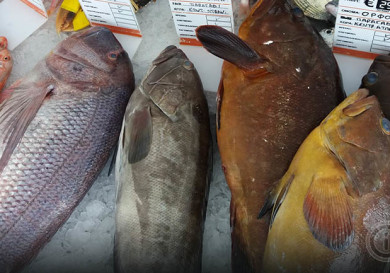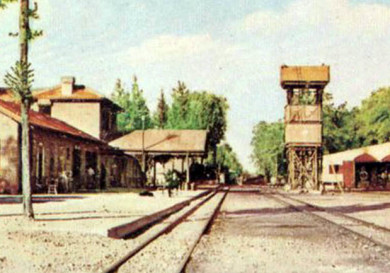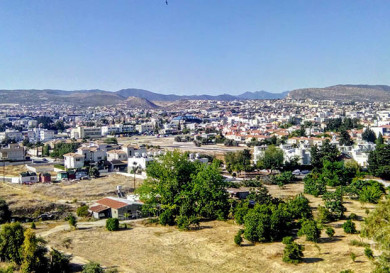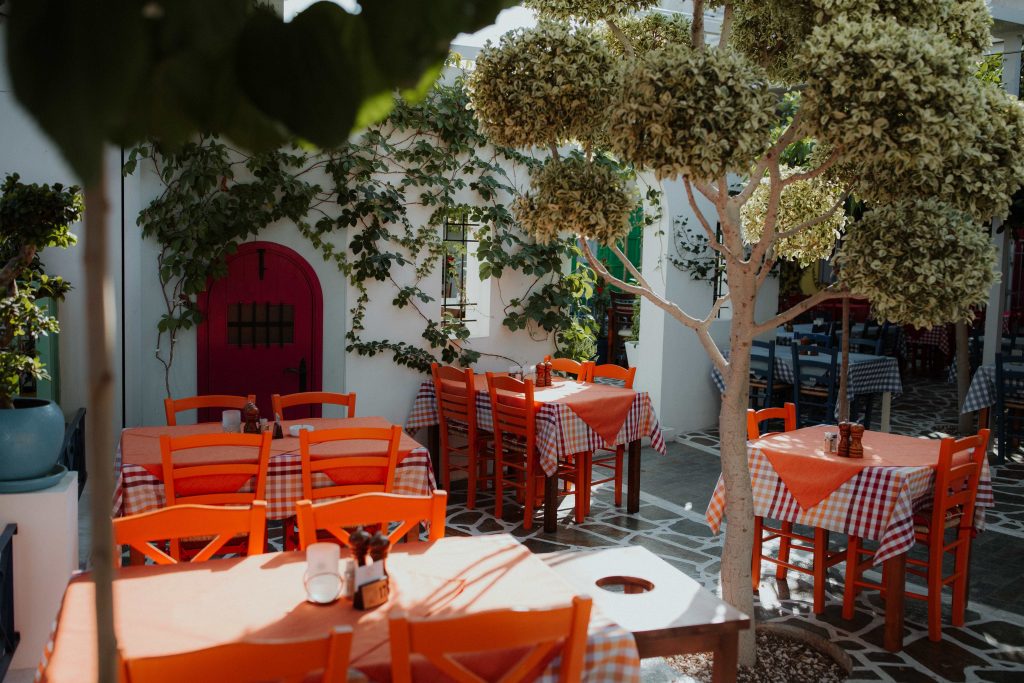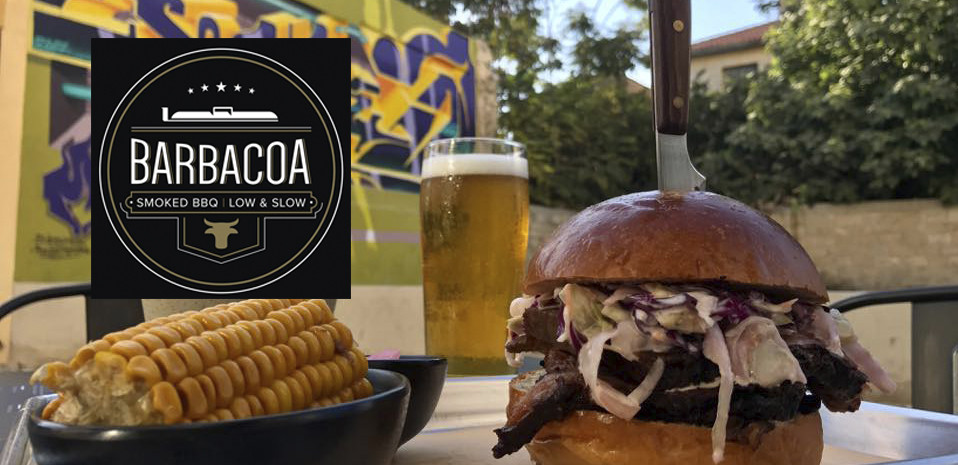Snakes are a mysterious phenomenon, especially for someone who was born in the UK.
Humans have little natural protection from snakes so we must educate ourselves and be aware of the dangers.
Precaution is the best policy here. There is no need to fear snakes, but you should be wary of them.
So what types of snake inhabit the island and which ones are dangerous?
The snake population is not as varied as some make it seem, and there are only 3 species that are poisonous so we will start with them.
The blunt-nosed Viper
This is a serious character and one you should treat with respect
The snake is a viper (Vipera Lebetina). It can measure 1.3 – 1.8 metres and has a thick body with a large, wide, triangular head. The colouring is a dull grey/brownish grey.
Around 20 attacks on humans are registered in Cyprus on average every year, but there has not been a single fatal case in the last 15 years.
The snake is active from March to November and it can be found in the mountains and near water, where is likes to hunt for birds and small rodents and seek refuge from the summer heat.
A human being is too large a prey for a snake so they will only attack if they have good reason, usually as an act of self defence, and if a human approaches its area it will hiss a warning.
The blunt-nosed viper’s poison has a manifested hemolytic action, which means when it’s in the bloodstream it destroys erythrocytes by affecting the vascular walls, causing the blood to coagulate. This is part of the reason why a tourniquet cannot be applied as it increases the possibility of gangrene. In case of a bite you should deliver the affected person to hospital as soon as possible.
Each main city in Cyprus has a General Hospital which works ‘round the clock, where you can receive the necessary care, including vaccine. It’s very important that you rest if bitten – do not move unnecessarily and try not to worry – increased heartbeat helps to spread the poison through the body.
If you can, try and suck the poison from the bite, spitting out the poisonous saliva. You should not cut or sear the wound.
Montpellier snake
Montpellier Snake (Malpolon Monspessulanus). A large snake which can measure 2 metres. Its food mainly consists of lizards, hence its name.
The snake is only conditionally poisonous. First, it is very shy and it is extremely rare to come across it. Secondly, the two poisonous teeth of the snake are located quite deep which is why it’s practically impossible for it to bite through human skin, it can only grasp at a finger.
It is a rare snake for Cyprus.
Cat Snake or Tree snake
A cat snake or a tree snake (Telescopus Fallax) is a colubrid snake. A small, thin, exquisite snake, whose length rarely exceeds 70 sm. The snake received its name because of the cat-like form of its eyes, and it likes to bite its prey and let it go – just like cats play with their prey. The poison of this snake is not dangerous to man and can only cause local irritation; its teeth are located too far back to bite a human being.
Here we end our description of the dangerous reptiles and move on to the more benign.
Whip snake
A Whip snake (Coluber Jugularis) is the largest and most magnificent on the island, with a length of up to 3 metres. It is this snake which is most often seen on the island, and you can often see them on the road where they have been run over by a car.
An adult has gleaming black skin with a bluish tint. The younger snakes are light brown with dark spots or stripes.
The whip snake eats rodents and other snakes, and is a powerful enemy of the poisonous blunt-nosed viper.
The Cyprus whip snake
The Cyprus whip snake (Coluber Cypriensis) has only been discovered quite recently, in the 80’s. Some have dark brown or olive brown colouring, with light spots on the front of the body. The maximum length of the Cyprus whip snake is 1 metre and it can climb vertical walls perfectly.
The Coin snake
The coin Snake (Coluber Numifer). This species resembles the blunt-nosed viper, but the circles on its back are brighter and more distinct. The length of this snake is around 1.7 metres. The snake is not poisonous but is very aggressive and will readily attack. Its bite can be painful.
Dahl’s whip snake
Dahl’s Whip Snake or Arrow Snake. (Coluber Najadum). A very unusual and protected snake. Dahl’s whip snake is extremely fast and shy, which is why you will rarely see it.
It got its other name, arrow snake, due to the way it watches its prey – it raises about a third of its body vertically and sways smoothly to disguise itself as vegetation and to see its prey better. It has a very interesting colouring and the front part of its body is brighter than the back.
Cyprus grass snake
The Cyprus Grass Snake. (Natrix Natrix Cypriaca). This species can only be found in Cyprus. This snake is a wonderful swimmer and hunts small fish, amphibians and frogs. To protect itself against predators, the snake can produce a bad smelling discharge from its anal glands. It is absolutely harmless to humans.
The pink worm snake
The pink worm snake (Typhlops Vermicularis) is the most uncommon snake in Cyprus. It’s small, only 25-40 centimetres long, and its shape makes it look like a worm. It lives and hunts underground, eating ants, ant eggs and maggots, as well as spiders and insects.
Snakes are an important part of the ecological system and their extinction would have grave consequences.
There are many natural predators, including cats, which were imported in large quantities on the orders of a saint in the 4th century, and they are very effective at their job.
A cobra, the one like you see on the front page, can be seen in the Cyprus zoo. You can read its detailed description in our story.




